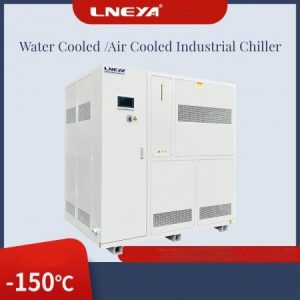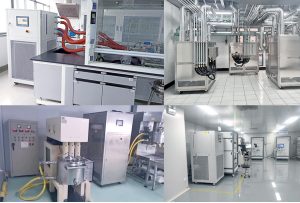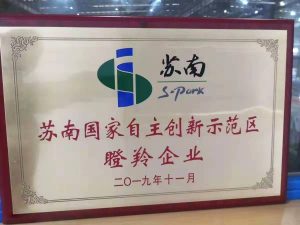Introduction to mixed solution of glycol chilling systems (glycol chillers)
Glycol chillers are industrial refrigeration systems that use a type of antifreeze called glycol, mixed with water, to lower the freezing point in the application of the chilling system.
Glycol is a class of organic compounds that belong to the alcohol family. When mixed with water and pumped through the pipes of a chilling system, glycol serves to slow the rate of freezing. It helps maintain temperature consistency in the application. Some glycol products also work to inhibit corrosion and bacterial growth within the pipes of the chilling system.
Glycol comes in two varieties that should never be mixed together: ethylene glycol and propylene glycol. Both types offer the same relative level of freeze protection. Both also help to guard against corrosion. Some grades of both types of glycol also help to prevent the growth of algae and bacteria within the chiller.
Ethylene glycol is a moderately toxic chemical that has a sweet taste and can be harmful if swallowed. For this reason, it should not be used in potable water or food processing systems when leakage is a possibility. Ethylene glycol has more widespread use due to its lower purchase price. Industrial applications like ice rinks and factories requiring large volumes of the coolant find this to be the most economical choice of glycol.
Mixing Water with Glycol in Your Industrial Refrigeration System
Although you should never mix glycol types there is something that should always be added: water. As mentioned, glycol must be mixed with water to function properly. The type and amount of water to use are key factors to consider.
Ratio of Water to Glycol to Use
Calculating the proper ratio of glycol to water in your chilling system depends on the coldest temperature that the glycol solution will reach during operation. If a chilling system is used indoors where there is no chance of freezing, the amount of glycol needed would be significantly less than required by a glycol chiller used outdoors where temperatures are prone to drop below freezing. Also, if an application requires a very low temperature to operate it should use a glycol mixture similar to that of an outdoor system. In a chilling system, this temperature is normally the saturated suction temperature in the evaporator, and normally this temperature is 10°F below the chiller set point temperature. Using the proper ratio of glycol and water in your chilling system is very important. Adding too much to your chiller system will cause it to become inefficient. However, not enough glycol could cause the system to freeze up, potentially bursting pipes or even rupturing the chiller evaporator.
To learn more about how a グリコールチラー works, contact LNEYA: sales@lneya.com.
関連推奨品
-
新エネルギー車の試験産業における水冷式低温循環器
1004新エネルギー自動車産業の発展は比較的急速である。技術革新に牽引され、新エネルギー自動車産業はチャンスに直面していると考えられている。しかし、新エネルギー車産業の発展に伴い、新エネルギー車産業は、より大きなビジネスチャンスに直面している。
詳細を見る -
高温と低温の冷却恒温システムを維持するには?
937The high and low temperature cooling constant temperature system performs refrigeration and heating operation in the pharmaceutical and chemical industry. It follows the rules of operation and meticulous requirements to continuously improve its qu...
詳細を見る -
朗報です!無錫莞亜LNEYA冷凍が新社名に
2600江蘇蘇南国家自主創新実証区が発表した「2019年江蘇南国家自主創新実証区におけるユニコーン、ガゼル企業の評価結果発表に関する通知」によると、ユニコーン、ガゼル企業の評価結果は、「2019年江蘇南国家自主創新実証区におけるユニコーン、ガゼル企業の評価結果発表に関する通知」に掲載された。
詳細を見る -
 LNEYA工業用冷凍機 メーカー サプライヤー
LNEYA工業用冷凍機 メーカー サプライヤー















